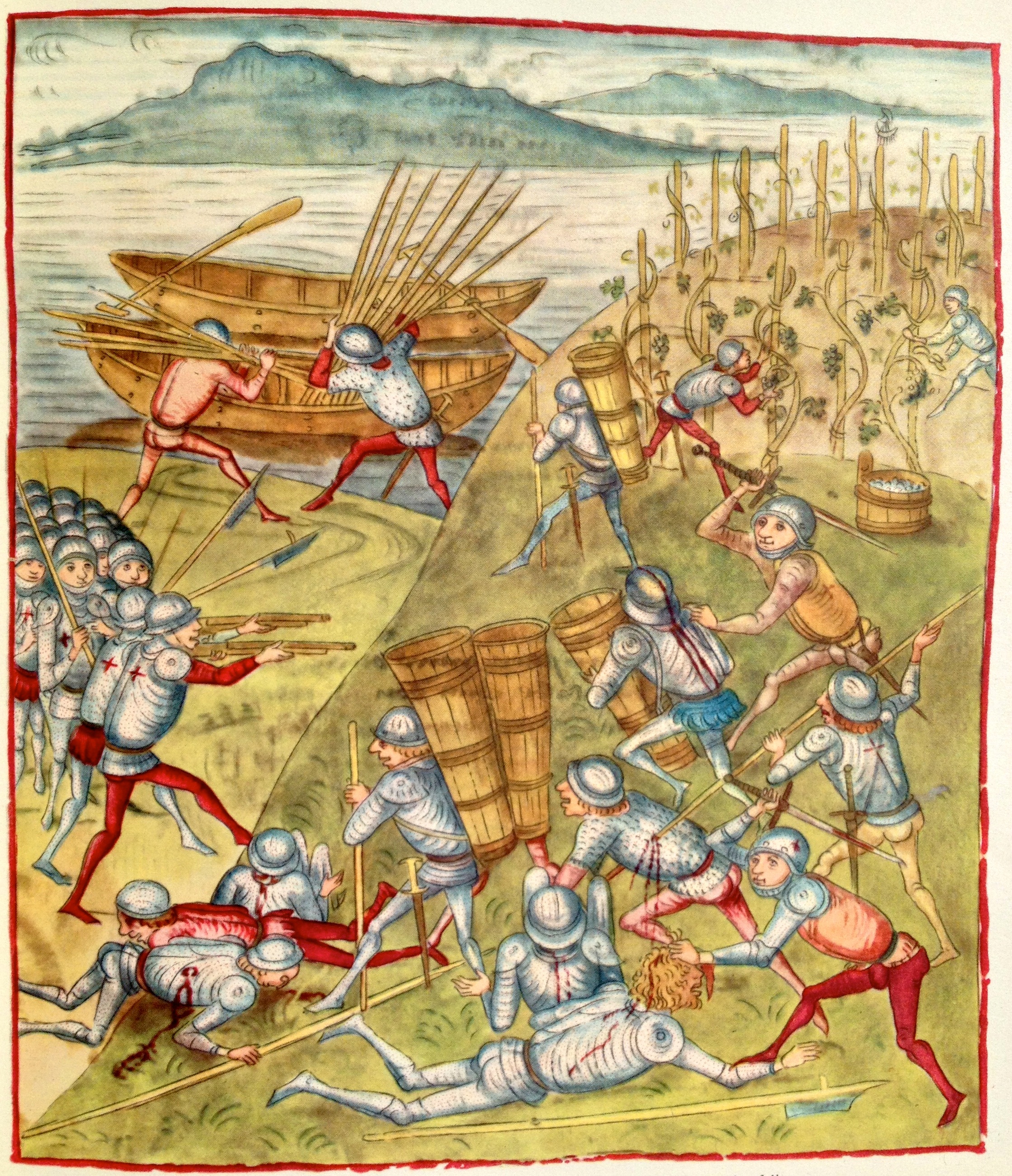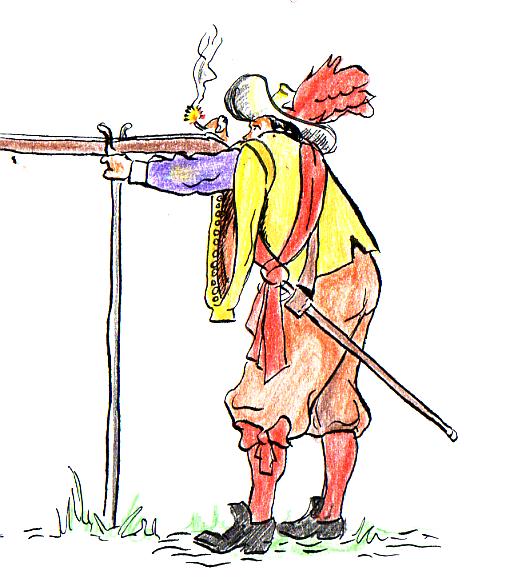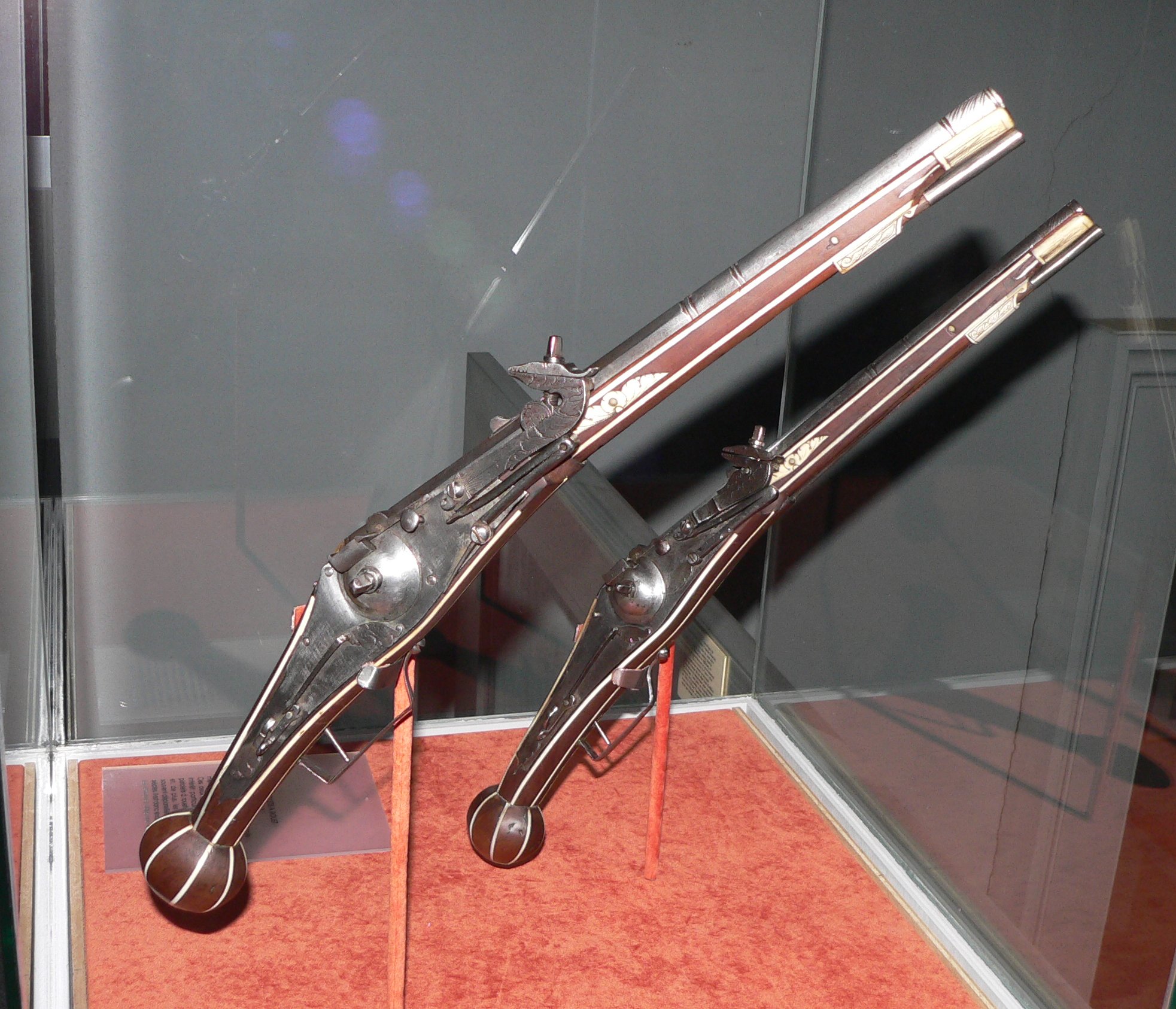|
Landed Army
The Landed Army () was the feudal cavalry of the Grand Principality of Moscow and Tsardom of Russia in the 15th to 17th centuries. Background In the second half of the 14th century, the ''druzhina'' was replaced by feudally organized units headed by boyars or dependent princes, and these units consisted of landed gentry (so called "''boyar's children''" or "'' service people''") and their armed servants ( "military slaves"). In the 15th century, such organization of detachments replaced the city regiments. Foundation A completely aristocratic army, based on this local system, was formed under Ivan III, the grand prince of Moscow. The process of reforming the army was associated with the unification of the Russian lands. Eventually, the Grand Principality of Moscow included new petty princedoms, courts of independent princes were dismissed, and " service people" passed to the grand prince. As a result, the appanage princes and boyars were transformed into state servants, who r ... [...More Info...] [...Related Items...] OR: [Wikipedia] [Google] [Baidu] |
Russian Nobility
The Russian nobility or ''dvoryanstvo'' () arose in the Middle Ages. In 1914, it consisted of approximately 1,900,000 members, out of a total population of 138,200,000. Up until the February Revolution of 1917, the Russian noble estates staffed most of the Russian government and possessed a self-governing body, the Assembly of the Nobility. The Russian language, Russian word for nobility, ''dvoryanstvo'' derives from Slavonic ''dvor'' (двор), meaning the noble court, court of a prince or duke (''knyaz''), and later, of the tsar or emperor. Here, ''dvor'' originally referred to servants at the estate of an aristocrat. In the late 16th and early 17th centuries, the system of hierarchy was a system of seniority known as ''mestnichestvo''. The word ''dvoryane'' described the highest rank of gentry, who performed duties at the royal court, lived in it (''Moskovskie zhiltsy'', "Moscow dwellers"), or were candidates to it, as for many boyar scions (''dvorovye deti boyarskie'', ''v ... [...More Info...] [...Related Items...] OR: [Wikipedia] [Google] [Baidu] |
Arquebus
An arquebus ( ) is a form of long gun that appeared in Europe and the Ottoman Empire during the 15th century. An infantryman armed with an arquebus is called an arquebusier. The term ''arquebus'' was applied to many different forms of firearms from the 15th to 17th centuries, but it originally referred to "a hand cannon, hand-gun with a hook-like projection or lug on its under surface, useful for steadying it against battlements or other objects when firing". These "hook guns" were in their earliest forms defensive weapons mounted on German city walls in the early 15th century. The addition of a shoulder stock, priming pan, and matchlock mechanism in the late 15th century turned the arquebus into a handheld firearm and also the first firearm equipped with a trigger. The exact dating of the matchlock's appearance is disputed. It could have appeared in the Ottoman Empire as early as 1465 and in Europe a little before 1475. The heavy arquebus, which was then called a musket, was d ... [...More Info...] [...Related Items...] OR: [Wikipedia] [Google] [Baidu] |
Military Units And Formations Of The Russian Empire
A military, also known collectively as armed forces, is a heavily armed, highly organized force primarily intended for warfare. Militaries are typically authorized and maintained by a sovereign state, with their members identifiable by a distinct military uniform. They may consist of one or more military branches such as an army, navy, air force, space force, marines, or coast guard. The main task of a military is usually defined as defence of their state and its interests against external armed threats. In broad usage, the terms "armed forces" and "military" are often synonymous, although in technical usage a distinction is sometimes made in which a country's armed forces may include other paramilitary forces such as armed police. Beyond warfare, the military may be employed in additional sanctioned and non-sanctioned functions within the state, including internal security threats, crowd control, promotion of political agendas, emergency services and reconstruction, prot ... [...More Info...] [...Related Items...] OR: [Wikipedia] [Google] [Baidu] |
Peter The Great
Peter I (, ; – ), better known as Peter the Great, was the Sovereign, Tsar and Grand Prince of all Russia, Tsar of all Russia from 1682 and the first Emperor of Russia, Emperor of all Russia from 1721 until his death in 1725. He reigned jointly with his half-brother Ivan V of Russia, Ivan V until 1696. From this year, Peter was an Absolute monarchy, absolute monarch, an autocrat who remained the ultimate authority and organized a well-ordered police state. Much of Peter's reign was consumed by lengthy wars against the Ottoman Empire, Ottoman and Swedish Empire, Swedish empires. His Azov campaigns were followed by the foundation of the Imperial Russian Navy, Russian Navy; after his victory in the Great Northern War, Russia annexed a Treaty of Nystad, significant portion of the eastern Baltic Sea, Baltic coastline and was officially renamed from a Tsardom of Russia, tsardom to an Russian Empire, empire. Peter led a cultural revolution that replaced some of the traditionalist ... [...More Info...] [...Related Items...] OR: [Wikipedia] [Google] [Baidu] |
Musketeer
A musketeer ( ) was a type of soldier equipped with a musket. Musketeers were an important part of early modern warfare, particularly in Europe, as they normally comprised the majority of their infantry. The musketeer was a precursor to the rifleman. Muskets were replaced by breech loading rifles as the almost universal firearm for modern armies during the period 1850 to 1870. The traditional designation of "musketeer" for an infantry private survived in the Imperial German Army until World War I. Historical antecedents The hand cannon was invented in Song dynasty China in the 12th century and was in widespread use there in the 13th century. It spread westward across Asia during the 14th century. The hand cannon evolved into the arquebus that appeared in Europe and the Ottoman Empire during the 15th century. The term musket was originally used to describe a heavy arquebus capable of penetrating heavy armor. Although this heavy version of the musket fell out of use after the mid ... [...More Info...] [...Related Items...] OR: [Wikipedia] [Google] [Baidu] |
Pike (weapon)
A pike is a long thrusting spear formerly used in European warfare from the Late Middle Ages and most of the early modern warfare, early modern period, and wielded by infantry, foot soldiers deployed in pike square formation, until it was largely replaced by bayonet-equipped muskets. The pike was particularly well known as the primary weapon of Spanish tercios, Swiss mercenary, German Landsknecht units and French sans-culottes. A similar weapon, the sarissa, had been used in classical antiquity, antiquity by Alexander the Great's Ancient Macedonians, Macedonian phalanx infantry. Design The pike was a long weapon, varying considerably in size, from long. Generally, a spear becomes a pike when it is too long to be wielded with one hand in combat. It was approximately in weight, with the 16th-century military writer John Smith (High Sheriff of Kent), Sir John Smythe recommending lighter rather than heavier pikes. It had a wooden shaft with an iron or steel spearhead affixed. Th ... [...More Info...] [...Related Items...] OR: [Wikipedia] [Google] [Baidu] |
Dragoon
Dragoons were originally a class of mounted infantry, who used horses for mobility, but dismounted to fight on foot. From the early 17th century onward, dragoons were increasingly also employed as conventional cavalry and trained for combat with swords and firearms from horseback. While their use goes back to the late 16th century, dragoon regiments were established in most European armies during the 17th and early 18th centuries; they provided greater mobility than regular infantry but were far less expensive than cavalry. The name reputedly derives from a type of firearm, called a ''Dragon (firearm), dragon'', which was a handgun version of a blunderbuss, carried by dragoons of the French Army. The title has been retained in modern times by a number of armoured warfare, armoured or ceremonial mounted regiments. Origins and name The establishment of dragoons evolved from the practice of sometimes transporting infantry by horse when speed of movement was needed. During th ... [...More Info...] [...Related Items...] OR: [Wikipedia] [Google] [Baidu] |
Reiter
''Reiter'' or ''Schwarze Reiter'' ("black riders", anglicized ''swart reiters'') were a type of cavalry in 16th to 17th century Central Europe including Holy Roman Empire, Polish–Lithuanian Commonwealth, Tsardom of Russia, and others. Contemporary to the cuirassier and lancer cavalry, they used smaller horses, for which reason they were also known as ''Ringerpferde'' (corresponding to the French '' Argoulets''). They were originally recruited in the North German Plain, west of the Oder river at the time of the Schmalkaldic War (1546–1547). The Reiter raised firearms to the status of primary weapons for cavalry, as opposed to earlier Western European heavy cavalry which primarily relied upon melee weapons. A Reiter's main weapons were two or more pistols and a sword; most Reiters wore helmets and cuirasses and often additional armor for the arms and legs; sometimes they also carried a long cavalry firearm known as an arquebus or a carbine (although this type of horseme ... [...More Info...] [...Related Items...] OR: [Wikipedia] [Google] [Baidu] |
Smolensk War
The Smolensk War (1632–1634) was a conflict fought between the Polish–Lithuanian Commonwealth and Russia. Hostilities began in October 1632 when Russian forces tried to capture the city of Smolensk. Small military engagements produced mixed results for both sides, but the surrender of the main Russian force in February 1634 led to the Treaty of Polyanovka. Russia accepted Polish–Lithuanian control over the Smolensk region, which lasted for another 20 years. Background In 1632, Sigismund III Vasa, the king of Poland and Grand Duke of Lithuania, died. Although the Commonwealth nobility quickly elected Sigismund's son Władysław IV Vasa as their new ruler, Poland's neighbours, expecting delays in the electoral process, tested the Commonwealth's perceived weakness. Swedish king Gustav II Adolph sent envoys to Russia and the Ottoman Empire to propose an alliance and war against the Commonwealth. The Commonwealth was not ready for war. In 1631, the royal army numbered ba ... [...More Info...] [...Related Items...] OR: [Wikipedia] [Google] [Baidu] |
Battle Of Moscow (1612)
The Battle of Moscow was a series of two battles, which took place in Moscow, on September 1 and 3, 1612, during the Polish–Muscovite War (1605–18), and Time of Troubles. Forces of the Polish–Lithuanian Commonwealth were commanded by Field Hetman of Lithuania, Jan Karol Chodkiewicz, while the Russians were led by Dmitry Pozharsky. Battles ended in decisive Russian victories. Prelude After the Battle of Klushino in summer of 1610, Tsar Vasili IV of Russia was deposed and taken to Warsaw. The Polish-Lithuanian army entered Moscow on September 21, 1610, and the boyars, clergy, and citizens of Moscow, in fear of False Dmitry II, accepted the Polish Prince Wladyslaw IV Vasa as new Tsar. But the foreign Tsar was not universally accepted outside Moscow, and the country was ransacked by Poles, mercenaries, and gangs of robbers. In March 1611, citizens of Moscow rebelled against the Poles, and the Polish garrison was besieged in the Kremlin by the First People's Militia, ... [...More Info...] [...Related Items...] OR: [Wikipedia] [Google] [Baidu] |
Gambeson
A gambeson (also known as, or similar to where historic or modern distinctions are made, the acton, aketon, padded jack, pourpoint, paltock, haustement, or arming doublet) is a padded defensive jacket, worn as armour separately, or combined with mail or plate armour. Gambesons were produced with a sewing technique called quilting or pourpointing that produced a padded cloth. They were usually constructed of linen or wool; the stuffing varied, and could be, for example, scrap cloth or horse hair. An arming doublet worn under armour, particularly plate armour of fifteenth- and sixteenth-century Europe, contains arming points for attaching plates. Fifteenth-century examples may include mail goussets sewn into the elbows and armpits, to protect the wearer in locations not covered by plate. German gothic armour arming doublets were generally shorter than Italian white armour doublets, which could extend to the upper thigh. In late fifteenth-century Italy, this also became a ci ... [...More Info...] [...Related Items...] OR: [Wikipedia] [Google] [Baidu] |
Mirror Armour
Mirror armour (, , meaning "mirror"; zh, 护心镜, , meaning "protect-heart mirror"), sometimes referred to as disc armour or as or ( meaning "four mirrors"; whence , ), was a type of cuirass used mainly in Asia, the Middle East, and Eastern Europe; including Indian subcontinent, India, Persia, Tibet, Russia, and the Ottoman Empire. It literally translates to "four mirrors" which is a reflection of how these pieces looked, which resembles four (sometimes more) metal discs or rectangular armour plates. Mirror armor was used in some cultures up to the 20th century. Description and history "Mirror armour" is a type of partial plate armour which was developed initially from round metal mirrors (a kind of Rondel (armour), rondel) worn over other armour (usually over mail) as reinforcement. Metal mirrors in this armour were considered as protection from not only cold steel and arrows, but also supernatural influence. It was believed that mirrors could reflect the evil eye, so they ... [...More Info...] [...Related Items...] OR: [Wikipedia] [Google] [Baidu] |









